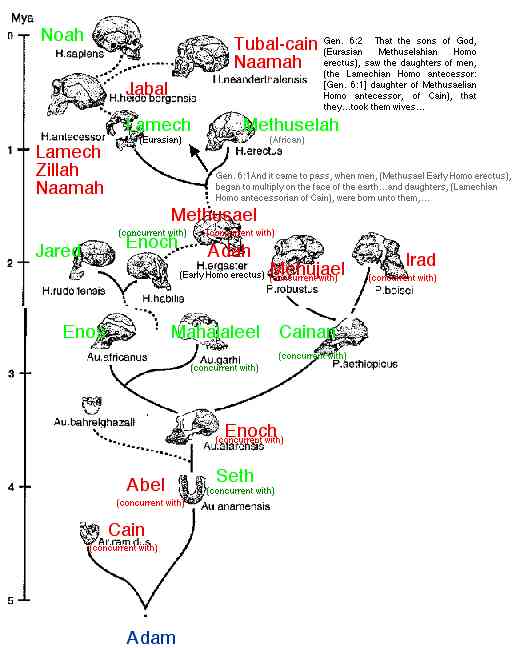There is no reason to keep talking to you since you are just adamant about maintaining your own interpretations of scripture in the face of so much support from the science community that confirms the truth to be found in scripture.
Wallow in ignorance if you will.
You fail here to produce a list from any team of Paleontologists while proposing that your own personal beliefs are more valid to use against Genesis as a factually supported commentary on Cosmic Evolution.
That is fine.
Take a rest and forget about Theistic Evolution.
It isn't for you or other medieval interpretators who remain self satisfied.
I haven't given any interpretations of scripture, so your reasoning is faulty. I have hardly discussed the bible at all.
You enrire statement is a non sequitor.
As I have already said, there is no need for a list of hominids compiled by a team of paleontologists. That's not the purpose of scientific inquiry.
Most paleontologists focus on one specimen or one period. It's a concept called "specialization." Their individual works and papers make up vast libraries of content where information can be found that clearly demonstrate over 40 species and sub-species of hominids. That trumps a single volume of a partial list of hominids ten-thousand fold.
As for your comment on "cosmic evolution," it isn't part of the discussion. Please do not call me ignorant when you do not even have a basic grasp of biological evolution to know that it does not include cosmology. Paleontologists do not engage professionally in cosmology.
Regarding theistic evolution, I happen to be one of many that abides by the interpretation. As I have already said, I am not a fundamentalist. I have no dedication to medieval interpretations. That is an ad hom and a strawman on your part.
And in all this, I have more than met the burden of proof for my claims. You have not.
If you wish to avoid the truth of that, fine. But don't put me into a category of some invisible group of fundamentalists that I obviously don't belong to, just so don't have to admit to yourself that you were wrong about the number of hominids we now have discovered.
Keep your self-delusions to yourself, please.




